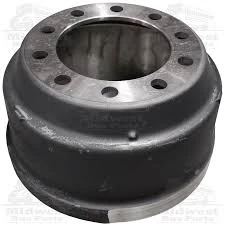
-
 Afrikaans
Afrikaans -
 Albanian
Albanian -
 Amharic
Amharic -
 Arabic
Arabic -
 Armenian
Armenian -
 Azerbaijani
Azerbaijani -
 Basque
Basque -
 Belarusian
Belarusian -
 Bengali
Bengali -
 Bosnian
Bosnian -
 Bulgarian
Bulgarian -
 Catalan
Catalan -
 Cebuano
Cebuano -
 Corsican
Corsican -
 Croatian
Croatian -
 Czech
Czech -
 Danish
Danish -
 Dutch
Dutch -
 English
English -
 Esperanto
Esperanto -
 Estonian
Estonian -
 Finnish
Finnish -
 French
French -
 Frisian
Frisian -
 Galician
Galician -
 Georgian
Georgian -
 German
German -
 Greek
Greek -
 Gujarati
Gujarati -
 Haitian Creole
Haitian Creole -
 hausa
hausa -
 hawaiian
hawaiian -
 Hebrew
Hebrew -
 Hindi
Hindi -
 Miao
Miao -
 Hungarian
Hungarian -
 Icelandic
Icelandic -
 igbo
igbo -
 Indonesian
Indonesian -
 irish
irish -
 Italian
Italian -
 Japanese
Japanese -
 Javanese
Javanese -
 Kannada
Kannada -
 kazakh
kazakh -
 Khmer
Khmer -
 Rwandese
Rwandese -
 Korean
Korean -
 Kurdish
Kurdish -
 Kyrgyz
Kyrgyz -
 Lao
Lao -
 Latin
Latin -
 Latvian
Latvian -
 Lithuanian
Lithuanian -
 Luxembourgish
Luxembourgish -
 Macedonian
Macedonian -
 Malgashi
Malgashi -
 Malay
Malay -
 Malayalam
Malayalam -
 Maltese
Maltese -
 Maori
Maori -
 Marathi
Marathi -
 Mongolian
Mongolian -
 Myanmar
Myanmar -
 Nepali
Nepali -
 Norwegian
Norwegian -
 Norwegian
Norwegian -
 Occitan
Occitan -
 Pashto
Pashto -
 Persian
Persian -
 Polish
Polish -
 Portuguese
Portuguese -
 Punjabi
Punjabi -
 Romanian
Romanian -
 Russian
Russian -
 Samoan
Samoan -
 Scottish Gaelic
Scottish Gaelic -
 Serbian
Serbian -
 Sesotho
Sesotho -
 Shona
Shona -
 Sindhi
Sindhi -
 Sinhala
Sinhala -
 Slovak
Slovak -
 Slovenian
Slovenian -
 Somali
Somali -
 Spanish
Spanish -
 Sundanese
Sundanese -
 Swahili
Swahili -
 Swedish
Swedish -
 Tagalog
Tagalog -
 Tajik
Tajik -
 Tamil
Tamil -
 Tatar
Tatar -
 Telugu
Telugu -
 Thai
Thai -
 Turkish
Turkish -
 Turkmen
Turkmen -
 Ukrainian
Ukrainian -
 Urdu
Urdu -
 Uighur
Uighur -
 Uzbek
Uzbek -
 Vietnamese
Vietnamese -
 Welsh
Welsh -
 Bantu
Bantu -
 Yiddish
Yiddish -
 Yoruba
Yoruba -
 Zulu
Zulu
Feb . 11, 2025 19:47
Back to list
drum brake primary shoe
Exploring the Essentials of Drum Brake Primary Shoe Insights and Expertise
Replacing the drum brake primary shoe requires thorough understanding and precision. It's vital to ensure that the new shoe is an exact match in terms of size, width, and material to the original. A misfit can lead to imbalance in braking and accelerated wear on other components. Moreover, ensuring that the primary and secondary shoes are installed correctly is crucial since reversing them can drastically affect braking dynamics. Experts and seasoned mechanics are keen to point out the difference in braking feel between drum and disc brakes. Drum brakes, including the primary shoe, provide a specific type of initial grip that is often described as ‘soft’ compared to the instant response of disc brakes. This quality can act as an advantage in certain heavy-duty or off-road applications, where gradual braking can prevent sliding or skidding. Trustworthiness in selecting drum brake primary shoes often hinges on choosing reputable brands and products with proven performance records. Established manufacturers often offer warranties and thoroughly test their products to meet industry standards. Additionally, consulting automotive manuals or professional mechanic advice can guide the decision-making process. Car enthusiasts and automotive experts often share personal stories and insights on forums and community boards about the intricacies of drum brake systems. Feedback from a variety of users highlights the critical nature of properly functioning drum brake primary shoes in achieving optimal braking performance. In conclusion, understanding the role and importance of the drum brake primary shoe is key to maintaining an effective and safe braking system. From material choice to installation precision, every aspect requires careful attention and expertise. By prioritizing quality and relying on expert guidance, vehicle owners and mechanics can ensure reliable braking performance, thereby enhancing safety for everyone on the road.


Replacing the drum brake primary shoe requires thorough understanding and precision. It's vital to ensure that the new shoe is an exact match in terms of size, width, and material to the original. A misfit can lead to imbalance in braking and accelerated wear on other components. Moreover, ensuring that the primary and secondary shoes are installed correctly is crucial since reversing them can drastically affect braking dynamics. Experts and seasoned mechanics are keen to point out the difference in braking feel between drum and disc brakes. Drum brakes, including the primary shoe, provide a specific type of initial grip that is often described as ‘soft’ compared to the instant response of disc brakes. This quality can act as an advantage in certain heavy-duty or off-road applications, where gradual braking can prevent sliding or skidding. Trustworthiness in selecting drum brake primary shoes often hinges on choosing reputable brands and products with proven performance records. Established manufacturers often offer warranties and thoroughly test their products to meet industry standards. Additionally, consulting automotive manuals or professional mechanic advice can guide the decision-making process. Car enthusiasts and automotive experts often share personal stories and insights on forums and community boards about the intricacies of drum brake systems. Feedback from a variety of users highlights the critical nature of properly functioning drum brake primary shoes in achieving optimal braking performance. In conclusion, understanding the role and importance of the drum brake primary shoe is key to maintaining an effective and safe braking system. From material choice to installation precision, every aspect requires careful attention and expertise. By prioritizing quality and relying on expert guidance, vehicle owners and mechanics can ensure reliable braking performance, thereby enhancing safety for everyone on the road.
Prev:
Next:
Latest news
-
What Are Drum BrakesNewsJul.07,2025
-
Understanding Brake Drum MaterialNewsJul.07,2025
-
Semi-Trailer Brake Drum: A Key Component for Extreme Loads and Long-Distance TransportNewsJul.07,2025
-
Drum Brake Pads for SaleNewsJul.07,2025
-
Brake Drums for SaleNewsJul.07,2025
-
Brake Drum ManufacturerNewsJul.07,2025
-
Aluminum Brake Drums: The Future of High-Performance CarsNewsJul.07,2025
